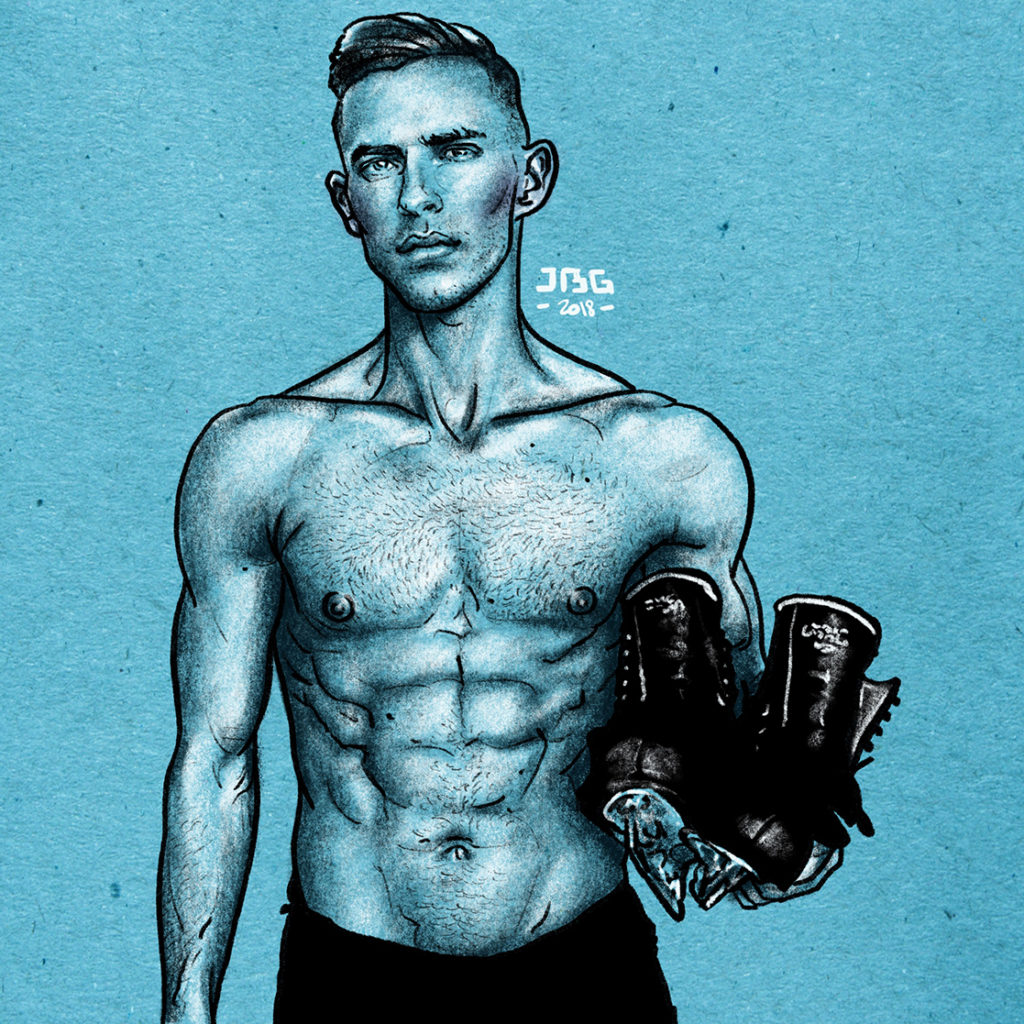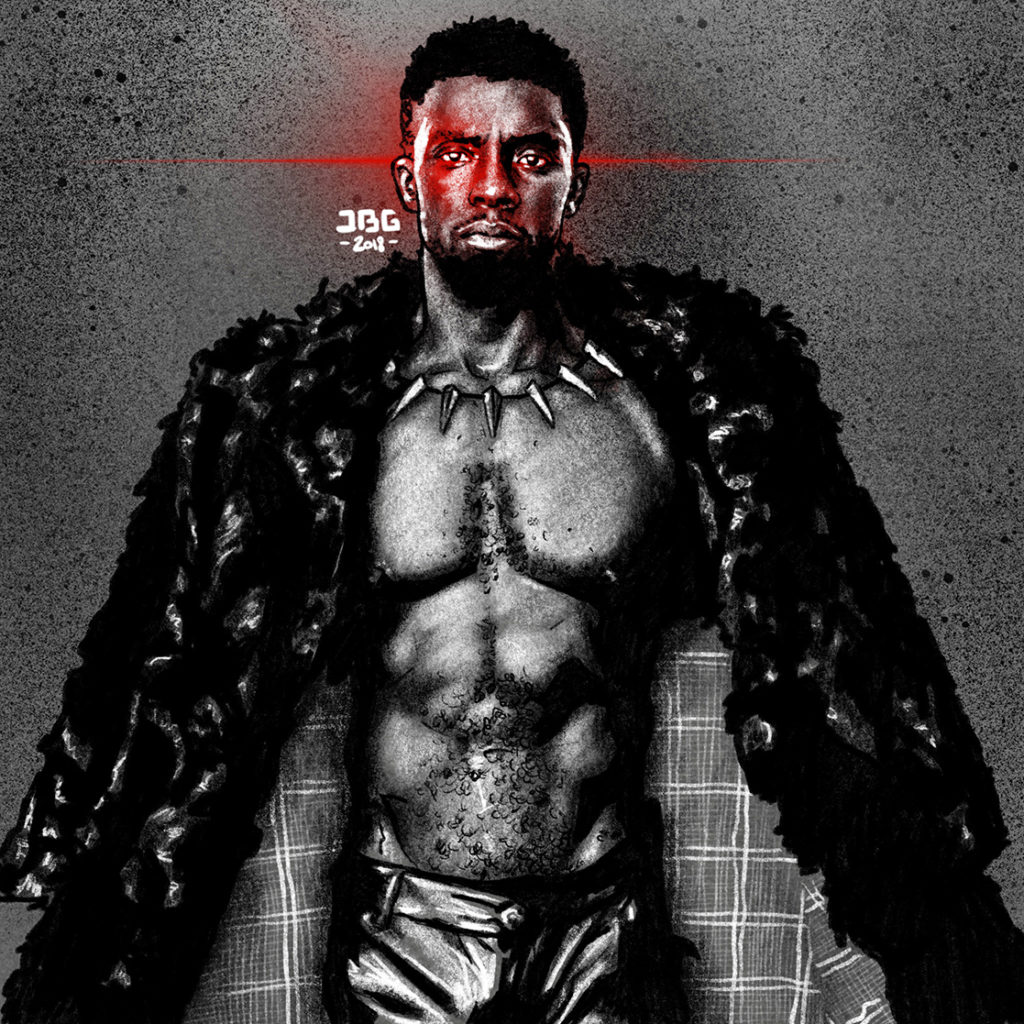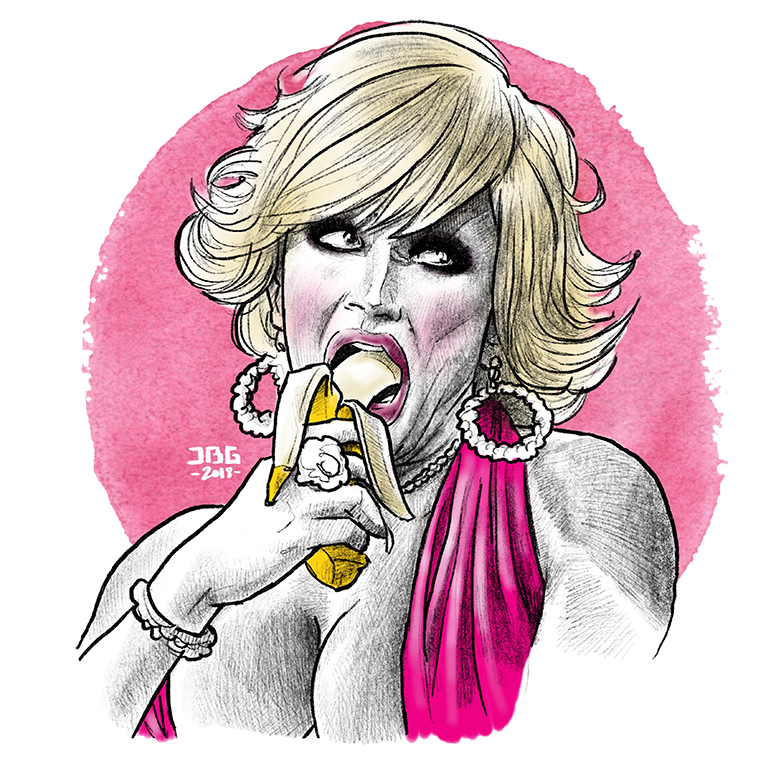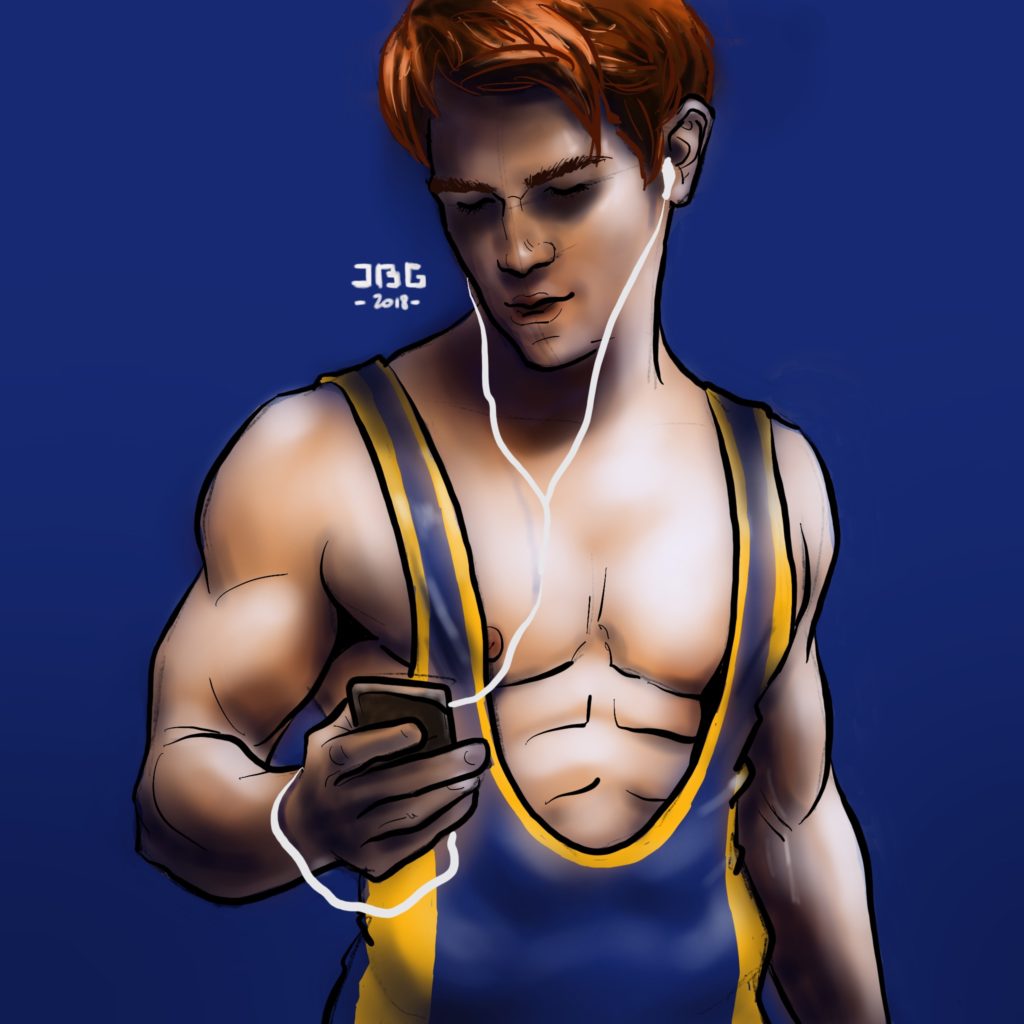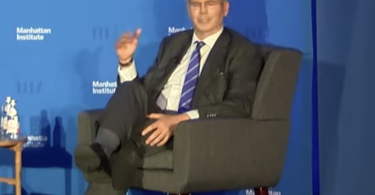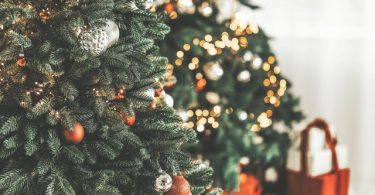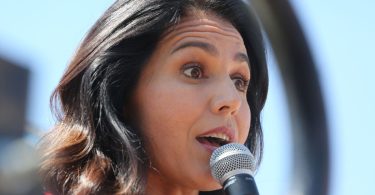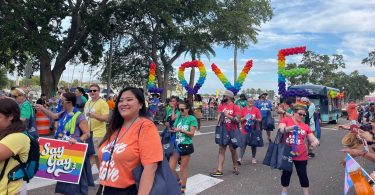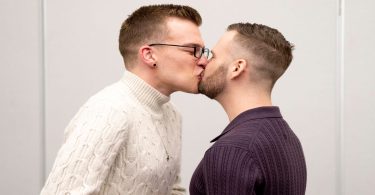They’re the essential cultural references that for many of us define our gay identity. The TV characters we love, the drag queens that entertain us, and the porn stars that excite us.
The House of JBG takes these iconic characters, and turns them into stunning works of art.
We caught up with JBG to admire some of his recent illustrations.
Why have you chosen to be known as the House of JBG?
JBG are my initials. When I decided to start creating my personal illustrations, and chose to focus on queer themes like drag and erotica, I decided against using my full name. In the spirit of drag families — who work within a system of ‘houses’ — I thought it would be interesting to be my own house, even if it was just myself on my own.
I also liked that the house reference indicated an affiliation to drag straight away, to the people who get it. Ultimately, I thought it could be interesting if one day, in the same way that drag mothers have ‘daughters’ that they help birth and pass their knowledge and name to, it left the door open to being joined by other artists within that House, and maybe one day become an art collective.
What appeals to you about drawing portraits?
Ever since I was little, I always preferred drawing people. As a student in art school we had to do studies of objects and architectural perspectives for hours on end, and it always bored me to death! I can do it if I have to, and I do since I work in design and have learned to enjoy it, but I’ll always take much more pleasure in drawing people rather than objects or space.
I guess I’m interested in telling stories about human beings, catching them at a revealing moment, and translating onto paper what I see as beautiful or interesting in them.
I always say that if, when people look at a portrait I’ve drawn, they understand what I saw or what made me want to draw this person and this specific image, at that very moment, then I’ve succeeded in my craft.
I like to think of artists, and portraitists especially, as storytellers. When I see a portrait, I like to imagine everything about the person depicted — their life, their habits, and their personality. I hope that people feel the same way when they look at portraits that I’ve drawn.
You’ve written that you’re drawn to drag queens because they’re inherently disruptive, that they challenge notions of gender and identity. Why is that important to you?
I grew up very shy and closeted, like many of us — being afraid to look gay, sound gay, act gay, and to be ‘figured out’ by straight people. It’s been a personal journey to claim my sexuality, to be at peace with myself, and even become proud and claim back that pride.
I remember coming across RuPaul when Supermodel came out — I was 11, a closeted gay kid in 90s provincial France. She just blew my mind, and opened my mind’s horizon — there were actual gay people out there who were ok with being as flamboyant and fabulous as they wanted!
Then in 1995 came Priscilla and my life was changed again, I’ve been obsessed with that movie ever since. I believe that’s the power of drag — those people gave me some hope, showed me that times were changing, that you had to be strong and proud, and that you just had to find your ‘tribe’ in life.
Above all, RuPaul, Priscilla, and drag queens taught me a very valuable lesson about not being afraid of that feminine part of me that I’d fought to keep hidden. That instead of being terrified of it, you could turn it into creative fuel, that it could be your special thing instead of something to be ashamed. Naturally, I ended up doing drag myself, even though it took a while for me to mentally get there!
I’m loving the worldwide explosion of enthusiasm about drag following the success of RuPaul’s Drag Race. I believe that we need drag queens in the gay community more than ever because of the current cult of rampant toxic masculinity mixed with fem and bottom shaming.
I think we’ve reached a stage in LGBT rights where people fought so hard to be accepted by straight people that they’ve given into a very binary heteronormative view in order to blend in — they don’t want to make waves, or to be seen as gay, they want to ‘pass’ for straight, and feminine qualities of being effeminate or sexually passive are seen as signs of weakness by some, hence the whole masc4masc culture.
Drag queens help educate everyone. I believe that they’re the messengers and preachers of acceptance by questioning the status quo, by showing that gender is truly a spectrum, and that you can choose exactly where you want to be on that spectrum. It’s really interesting how many questions you get asked as a queen — if you’re trans, if you want to transition, if you live your whole life dressed as a woman, it really is the starting point of a conversation. If only one guy who’s been feeling trapped by contemporary gay ideals of masculinity — feels he has to be bearded or muscular or hairy or an exclusive top to be accepted and desired within the gay world — goes out one night and sees a queen and realises that embracing your femininity is ok, that it’s nothing to be ashamed of, and that it can even be celebrated, then the queen’s job is done.
I think we could use a healthy dose of tolerance and acceptance within the gay community these days — there’s a lot of harshness out there in the way we treat each other. I think the modern world is still tough on us enough without us being horrible to each other within our community. Our community should be a safe haven, and queens are historically the guardians of that openness and acceptance, and they do it in the most fabulous way.
Who are some of your favourite drag queens?
I’d say my all-time favourite is Katya Zamo, and then also Jinkx Monsoon, Trixie Mattel and Alaska Thunderfuck — they really embody what I love about drag. They’re all visually interesting and gorgeous, but for me it’s not just about being visually fishy and a perfect fashion doll and looking pretty down at the club . I like my queens to be clever, well read, quick-witted, filthy, and also born performers.
Speaking of RuPaul’s Drag Race, who could forget the most iconic Drag Race top-three of all time — Bianca Del Rio is such a perfect, rounded, seasoned queen, her wit and quick tongue are simply astonishing, Adore Delano is just so charming and adorable and charismatic, and a great singer, and Courtney Act is simply the queen of fish, she’s so cute and also a great performer and singer.
Outside of Drag Race, I love Lady Bunny, who’s a true drag icon and who embodies the filthy humour I simply adore. Also, obviously, Divine, who was such a disruptive and creative force and came up with such strong and personal aesthetics. Finally, Mother Ru, who has accomplished so much worldwide for the art of drag and inspired so many — me included.
I’d also love to pay tribute to the thriving Parisian drag scene — my favourite queens being my Spanish drag mother Mariska Stardust. She is simply the kindest, prettiest, and loving queen in town — the drag collective she’s part of is the Paillettes Queer show. If you’re ever in town, and speak French, make sure to check out their performances! Parisian queens Cookie Kunty, Veida Shiminazzo, Nomai, Le Filip, and Veronika Von Lear are also as kind and fun as they are talented.
You’ve also written that porn-stars appeal to you because they’re outsiders, on the fringes of the gay community. Do you sometimes feel like an outsider?
Yes, but maybe less so now. We’re all on a journey to acceptance — at first we seek it from others and then realise it has to come from within, but I was never really in the zeitgeist of what was considered ‘the hot look’ in the gay community. I’m very, very tall, and have always been thin and lanky, so I’ve never really been the guy that everyone would be after.
When I came back to Paris after living abroad, I really didn’t recognise myself in the gay scene and in the bars and clubs — most of them just weren’t for me. Obviously, I found like-minded gay friends in the end, but it’s not until I found the drag scene that I really felt comfortable and accepted within the gay world.
The people I’ve met through that drag scene are the kindest, funniest, and most loving creatures. Above all, they’re all self-proclaimed and proud weirdos, all connected by this very strange thing that we do which automatically makes us an odd, deranged family, and it’s joyous.
I guess it’s a classic tale — a lot of artists’ feel that their creativity is based on that feeling of not belonging, of being different, which is where the magic happens when the tables turn and you start being celebrated for your work. As artists, we have the power to transform that which made us feel different into what feeds us. I think when people see it through your work they are touched because it’s universal, we all truly feel like this at some point in our lives, even the people who appear perfect and successful from the outside.
Who are some of your favourite porn-stars?
There are so many! My all time favourites would include Damien Crosse, Tim Kruger, Brent Corrigan, Micah Brandt, Boomer Banks, Jack Hunter, Rafael Alencar, Johnny Rapid, Daniel from Sean Cody, XL, Bobby Blake, Samuel O’Toole, Blake Mitchell, Adam Russo, Arpad Miklos, Darius Ferdynand, and Joe Parker.
I also love the vintage 70s and 80s aesthetics. I love Bruno, Chad Douglas, Jeff Stryker, and Ed Wiley. To me, Al Parker was, and remains, the handsomest man to ever appear in porn.
I also love a lot of performers who did both straight and gay porn — like Peter North/Matt Ramsey, Ryan Driller/Jeremy Bilding, Matt Hughes/Danny D, Doryann Marguet, and Lance Heart.
Would you describe yourself as a gay artist?
I’ve recently had an argument with someone about this! I don’t in any way promote a segregation between straight art and gay art, or a ghetto-isation of who we are and the art we produce. But the fact is that I’ve come to believe that in this day and age, and considering the state of the world, just being gay or queer and existing is a political act. So beyond that, producing art that centres around us becomes a political act too.
So yes, I would describe myself as a gay artist, and what I do as gay art because it’s based on gay and queer interests. I aim to depict us as a group, a community, as who we are — our desires, sexuality, and culture.
Obviously, I still draw straight people, because I’ll draw whoever inspires me, and I’m in no way radical about this. It’s not about willingly setting ourselves aside to pick a fight with straight people or antagonise them, but I believe it’s important for our visibility and representation.
During the fight that I recently had about this, their opposing argument — as a straight man — was that gay men will never be fully accepted if we keep standing out willingly and claiming our difference every chance we get, that if we are truly equal then we shouldn’t have to mention our sexuality. There is some logic to that, but let’s agree to disagree.
In an ideal utopia, of course, there wouldn’t be a need to mention your orientation if there was absolutely no prejudice against anybody — but that’s not the world we live in. I believe that generations of activists and pioneers died before us for our rights and visibility, and didn’t do so for us to try and blend-in in silence, without making too much noise.
It seems to me that it’s a strange double-standard of straight people, telling us we can be accepted if we aren’t too loud and don’t make them too uncomfortable — I don’t think that’s fair. I believe total acceptance would mean being fine with us exactly as we are, whichever way we want.
This debate infuriates me since it’s a very easy opinion coming from someone who has never been part of an oppressed minority. I’m really over the straight majority telling me how I should represent myself and how to live my sexuality in order to be accepted by them. Straight cis white men have ruled the world for centuries, telling us how to be and what to do, and I have no desire to comply to their will in order to avoid making them uncomfortable.
Representation is important and matters more than ever now. We saw this with the Winter Olympics — people argued that the out gay athletes competing should not be referred to as gay. Sure, it shouldn’t be the first and only thing mentioned about them, since their performance or who they are isn’t solely defined by their sexual orientation. But, without putting the whole emphasis on it, if it’s mentioned it becomes representation. If a small closeted child is watching somewhere, and sees an athlete who is out and proud and succeeding, that’s a symbol, and it’s a very powerful message for future generations.
It’s the same thing with my art. I sometimes feel weirded out when teenagers start following me due to the nature of my work. But a friend told me not to block the teenagers because if we were 15 or 16 and closeted in a small town, we would follow accounts like mine because it would help us to know that there are people like us out there and that our desires and sexuality are ok, and that we’re not alone.
It seems to me that most people who belong to the ruling majority have never felt the need for representation, so they have a hard time understanding that need and necessity for it. It’s the same with the Black Panther phenomenon right now — a lot of white people don’t get the fuss about it and don’t get why it’s so important.
You’ve got a big following on Instagram — why is Instagram a social media platform that appeals to you?
It’s just such a great platform to share your art, and it makes it easy to connect with other artists and fans. I use Instagram posts for my work, and I use stories to showcase my new work and also day-to-day life stuff.
Followers who like you for your art also want to see who you are as a person — your life, your tastes — it’s a whole package.
When I come across a new artist I like, I just message them on Instagram. I also end up chatting to some of the people I’ve drawn because they reply to my drawings. It’s amazing, I’ve made some really good friends through it, connected with a lot of like-minded artists, and got a lot of business connections also.
Apart from Instagram, where can people see and buy your work?
All my designs are up on my Threadless shop — as t-shirts, prints, and accessories. I’ve also recently launched an Etsy store for people who want to buy existing original drawings.
People can always get in touch about commissions. Plus, you can see the uncensored versions of my work on my tumblr.
I saw a post from Brent Corrigan, that you’re currently working on a project with him? How did that come about?
I’d drawn Brent a few times, having being a huge fan of his for years. One day, someone bought a piece that I’d drawn of him and he commented on the drawing and we got to chatting.
He was incredibly nice, sweet, and supportive of my work. He then got in touch regarding his project to ask if I’d be interested and what I thought about being involved. It was just mind-blowing — I try not to ‘fangirl’ over people who contact me for projects now, but it’s always surreal when you’ve been a fan of someone for that long and they get in touch with you in a professional capacity.
Wonderful things can happen when you just put your creations out there, you never know who’s watching on the other side of the screen.
Who are some of the illustrators and artists who inspire you?
Obviously, Tom of Finland is my ultimate reference. But as classic masters go, my favourites include Alfons Mucha, Gustav Klimt, John Singer Sargent, Caravaggio, Gustave Moreau, Edward Burne Jones, Dante Gabriel Rossetti and John William Waterhouse.
In terms of contemporary artists, I adore Gerhard Richter, Sophie Calle, Jan Fabre, Andy Warhol, Keith Haring, and Yoshitomo Nara, as well as genius photographers like Raymond Depardon, Robert Mapplethorpe, Sarah Moon, Ellen Von Unwerth, Pierre & Gilles, David Lachapelle, and Nick Knight.
As for queer and gay illustrators working now, I really admire the work of Christian Cimoroni, Ego Rodriguez, Matt Vordtriede, André Rocha, Todd Lamming, and Carlitos Mejia.
For Drag Race art, Chad Sell is the reigning king as well, as well as Michael DiMotta.
What do you enjoy about living in Paris?
It’s a great place. Although there are downsides to it, just like any other place in the world, it’s very special. I guess I enjoy our Latin way of life — every time I travel to more Germanic or Anglo-Saxon countries I’m reminded that we are indeed, very Latin!
Paris is a beautiful city. People travel from all over the world to experience it — as Parisians we tend to forget about it, but then you’ll be chatting with a friend, walking by the Seine, and you look up to see the île Saint Louis with the towers of Notre-Dame and the Eiffel Tower in the distance, and you realise that you’re actually pretty lucky.
Those are all clichés but clichés are as such because they’re based on truths, so
I just adore the café culture, meeting up with friends after work and chatting over wine and cheese & ham plates. The culture, the museums, the exhibitions, the fashion world, the wine, the food, the bread and pastries! They’re clichés, they’re what we’re known for but they’re all true, and we’re so lucky to have it all here.
Paris is one of those magical places where talented people from all over the world converge to live their dreams and create. So when you start working within the creative field, it becomes a little interconnected world of its own. People don’t realise how small Paris is, it’s a village!
I really enjoy the quality of life here. As French people, we really value a healthy balance of work and rest. We enjoy the simple things — meeting friends and discussing life for hours on end, with wine, good conversation, and good company.
There’s been a new wave of energy in recent years in the Parisian nightlife. There’s now really cool queer and drag parties all week round, every week!
What next for the House of JBG?
I’m going to focus on continuing to expand my Threadless shop — I really want to keep the t-shirts going, and there are so many ones I want to add to the black biro pen portrait series.
I also have a few projects in the works for t-shirts and merch for other people, which is very exciting. This year has been a bit crazy, but I’d still love to gather my drawings in books dedicated to themes — queens, and porn stars. I’d also love to put together an exhibition at some point in the near future.
Above all, I want to keep drawing, to keep evolving in my style and as an artist, and to keep paying tribute to the people I find inspiring, fascinating, and who are making a difference.
- Adam Rippon. Image courtesy of House of JBG
- Chadwick Boseman. Image courtesy of House of JBG
- BenDeLaCreme. Image courtesy of House of JBG
- Riverdale’s Archie. Image courtesy of House of JBG

